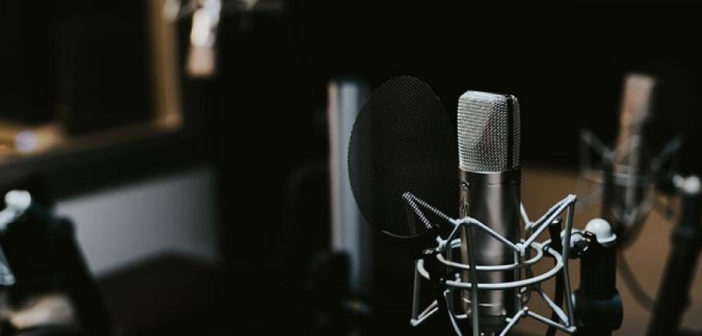A decade ago, I co-hosted a 30-minute podcast called DadsUnplugged for five years. Unfortunately, the company that powered our podcast retooled and the show was cancelled. Regardless, I learned a great deal from the experience and even picked up a client based in Singapore, thanks to our global reach. Since then, podcasting has seen a dramatic resurgence and has become a focal point for a variety of brands looking to differentiate. In this article (part one of three in a SmartBrief series), I outline compelling reasons why your brand should consider podcasting, how to get started and how to market effectively.
What is podcasting and why should I care?
While podcasting was invented in 2004, it wasn’t made popular until Adam Curry of MTV fame brought it to the mainstream over a decade ago. Since then, the audio platform has grown in popularity, both in terms of listeners and resulting advertising dollars. Here are just a few compelling statistics regarding the revitalization of podcasting as an effective marketing platform:
- 44% of Americans have listened to a podcast (124 million people)
- 26% of Americans listen to podcasts monthly (up from 24% in 2017)
- 32% of Americans ages 25-54 listen to podcasts monthly
- 48 million Americans listen to podcasts weekly (up from 6 million in 2017)
- Podcast listeners consume an average of seven different podcasts weekly
- 80% of podcast listeners consume “all” or “most” of each episode
- There are currently 550,000 podcasts available today
While mobile devices constitute a large percent of regular consumption, smart speaker sales are also a major contributor to the tremendous growth of podcast consumption the last year or so. There are four primary reasons why people listen to podcasts, all which brands can leverage: authenticity, convenience, simplicity and nostalgia. Even if you’re a startup with limited marketing budget and time, podcasting can provide a foundational element to your go-to-market strategy.
The benefits of podcasting
There are a variety of reasons for brands to podcast regularly. The most common motivations are generating brand awareness, engagement and thought leadership. There are more altruistic reasons as well, which may include sharing information/insights or creating an online community. Less altruistic reasons commonly include driving site traffic or revenue streams or to hone speaking and interviewing skills (on a personal level). Regardless of your motivations or objectives, podcasting can provide reliable results.
If you’re still unsure whether podcasting is right for your brand, answer the following questions:
- Are you looking to build a relationship between your brand and your audience?
- Do you have valuable information to share?
- Are you able and willing to talk about your products, services and/or industry on a regular basis?
- Do you want your brand to have a voice?
- Does your audience listen to podcasts?
If you answered yes to one or more of the above questions, then podcasting may be right for you (and you don’t have to ask your doctor first).
How to get started with podcasting
As with any marketing efforts, a podcasting program should start with foundational alignment to marketing or business objectives. The most common objectives are increasing brand awareness, brand engagement, site/blog traffic, thought-leadership or revenue generation. Once objectives are identified and prioritized, your podcasting plan should outline strategies and tactics, which should include format, frequency, duration, host/s, POV, guests, research, syndication and marketing efforts.
Costs associated with podcasting
The hardware and software required for podcasting is typically much more affordable than video. While it’s technically possible to start podcasting with a smartphone for free, investing in the proper hardware and software is highly recommended. If you want decent sound quality, you will need to invest in a microphone, mic stand, headphones, mixer, editing software and acoustics. A bare-bones DIY setup including an affordable mic, stand, mixer, headphones and acoustic panels for a sound box will start at $75. A mid-range setup, including condenser mic, stand, upgraded mixer, acoustic panels (for a makeshift recording room) and Adobe Audition CC software will run $150 and up. For a professional-grade setup, including a dedicated studio, will run $750 (not including talent, rent or acoustic panels).
Podcast hosting: Host site vs. podcatcher
For listeners to find and listen to your podcast, you need to find a host. Hosting fees range from free to $99 a month, but the most common starting point will run $20 a month for reasonably robust management and reporting features (we often recommend Libsyn to our clients). Most hosting sites charge based on monthly usage, but some are based on lifetime data allowances. Podcast hosting sites allow you to upload podcasts directly, including descriptions and thumbnails. From there, podcatchers (think podcast directories) pick up and syndicate your podcasts for free via RSS feeds. Popular podcatchers include, but are not limited to: iTunes, Stitcher Radio, Spotify, Google Play Music, Podcast Addict, CastBox, Pocket Casts, DoggCatcher Podcast Player, Podcast Go and TuneIn Radio.
Podcasting provides many benefits to brands looking to differentiate in the marketplace. It also provides a safe outlet for advertising unlike other social and search channels. Look for part two of this podcasting series soon, in which we will cover podcast funding and planning strategies and tactics.
–
This article first appeared in www.smartbrief.com
Seeking to build and grow your brand using the force of consumer insight, strategic foresight, creative disruption and technology prowess? Talk to us at +9714 3867728 or mail: info@groupisd.com or visit www.groupisd.com


